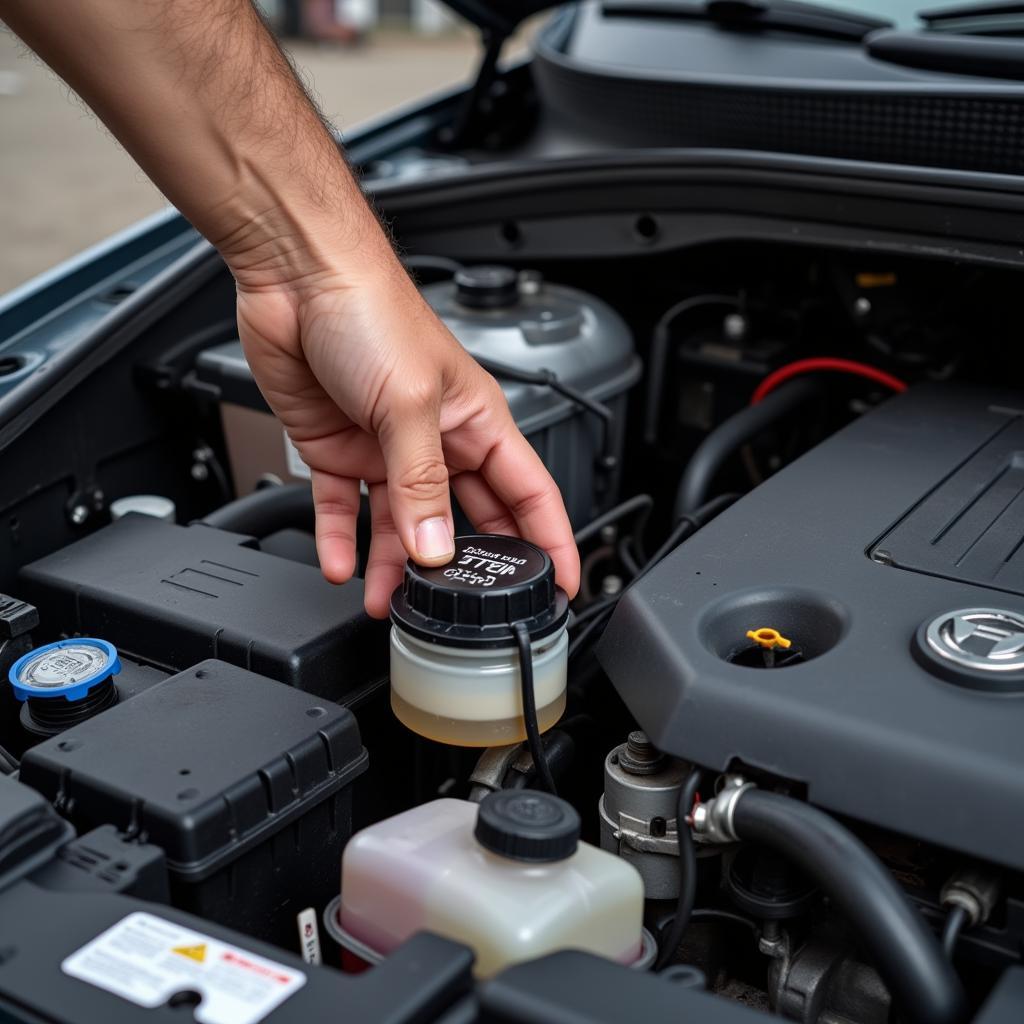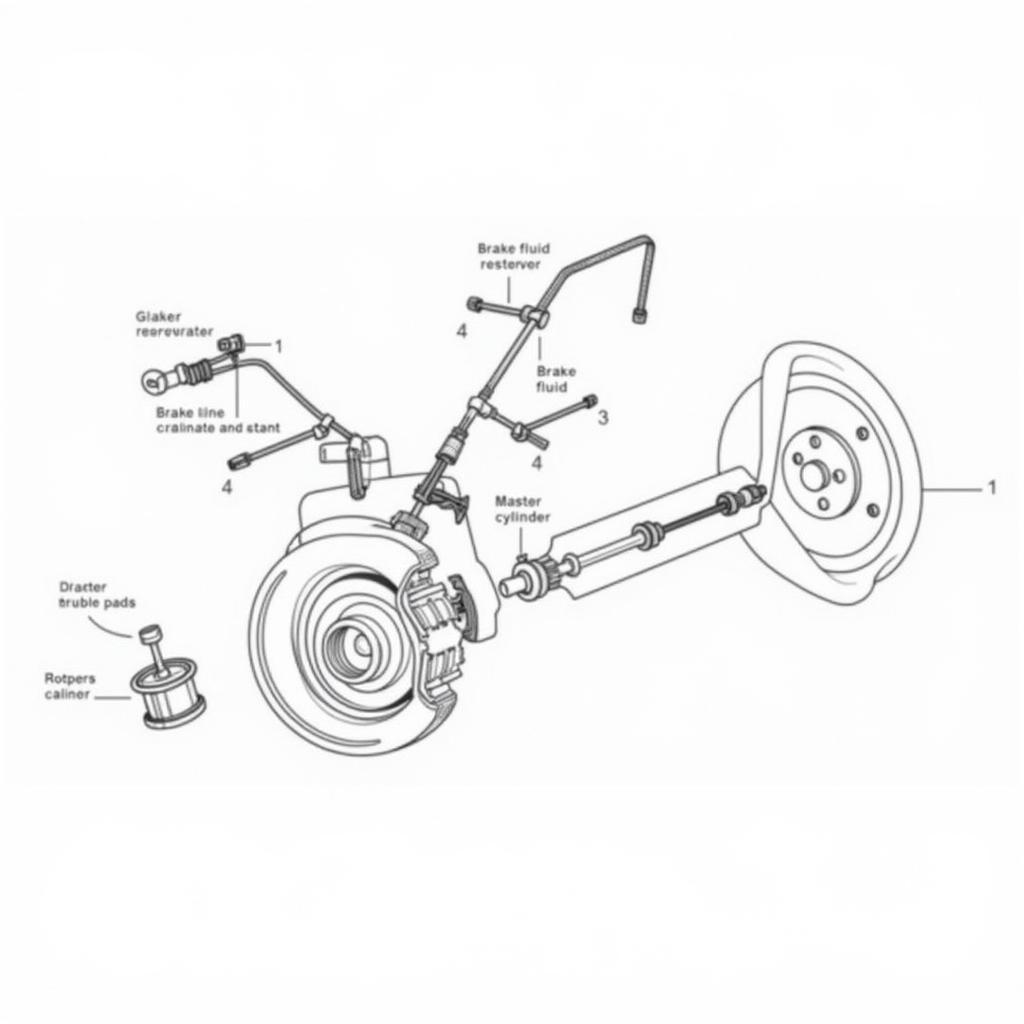The brake light warning symbol on your dashboard is a crucial safety feature that shouldn’t be ignored. It illuminates to alert you of a malfunction somewhere within your braking system, potentially putting you and others at risk. As experts in automotive electrical engineering, specializing in remote diagnostics, programming, and software installation, we understand the intricacies of this warning and are here to guide you through what it means and how to address it.
Understanding the Brake Light Warning Symbol
The brake light warning symbol is typically a red circle with an exclamation mark or the word “BRAKE” inside. While the exact appearance might vary slightly across vehicle makes and models, its presence always signals a problem within your braking system.
Common Causes of a Brake Light Warning Light
There are several reasons why your brake light warning symbol might illuminate. Here are some of the most frequent culprits:
- Worn Brake Pads: Brake pads are designed to wear down over time. When they become too thin, a sensor triggers the warning light, indicating it’s time for a replacement.
- Low Brake Fluid Level: Brake fluid is essential for transferring force from your brake pedal to the brakes themselves. A leak in the system can lead to low fluid levels, triggering the warning.
- Faulty Brake Light Switch: The brake light switch is responsible for activating your brake lights when you press the pedal. A malfunctioning switch can disrupt this process, leading to the warning symbol appearing.
- ABS Issue: While less common, a problem with your Anti-lock Braking System (ABS) can also trigger the warning light. This could be due to a faulty sensor or module within the ABS system.
What to Do When Your Brake Light Warning Symbol Turns On
Ignoring this warning light can have serious consequences. Here’s a step-by-step guide on what to do:
- Safely Pull Over: As soon as it’s safe, pull over to the side of the road. Driving with a potential brake issue is incredibly risky.
- Check Your Brake Fluid: Carefully open the hood and locate the brake fluid reservoir. Check the fluid level, ensuring it falls within the minimum and maximum lines indicated on the reservoir.
- Inspect Your Brake Lights: If possible, have someone press the brake pedal while you stand behind the vehicle to verify that all brake lights (including the third brake light) are functioning correctly.
- Contact a Professional: If you notice low brake fluid, damaged brake lines, or malfunctioning brake lights, it’s best to contact a qualified mechanic or dealership immediately. Attempting DIY repairs on your braking system without proper knowledge and tools can be dangerous.
“Ignoring a brake light warning is akin to ignoring a flashing red light on the road,” warns Mark Williams, a veteran automotive electrician with over 20 years of experience. “It’s always better to err on the side of caution and have a professional diagnose the issue.”
Remote Diagnostics and Software Solutions
In certain instances, the issue triggering the brake light warning symbol can be diagnosed and even repaired remotely. Advancements in automotive technology allow skilled technicians to access a vehicle’s onboard computer system, analyze data, and potentially identify the root cause of the problem.
For example, if the issue stems from a software glitch within the ABS module, a remote software update might be all that’s needed to rectify the problem. This eliminates the need for a physical visit to the repair shop, saving you time and potentially reducing repair costs.
Preventing Future Brake Light Warnings
While some causes, like normal brake pad wear, are unavoidable, you can take proactive measures to minimize the chances of encountering a brake light warning symbol:
- Regular Brake Inspections: Schedule routine brake inspections with a qualified mechanic, especially if you frequently drive in heavy traffic or challenging road conditions.
- Be Mindful of Brake Fluid: Regularly check your brake fluid level, especially if you notice any changes in your brake pedal feel or responsiveness.
- Address Warning Lights Promptly: Never ignore any warning light on your dashboard, especially those related to your braking system.
By understanding the significance of the brake light warning symbol, the common causes behind it, and the steps to take when it appears, you can ensure your safety and the optimal performance of your vehicle’s braking system. For complex issues or if you’re unsure about the diagnosis, always seek the expertise of qualified professionals. You can find more information about specific brake warning light symbols on vehicles like the Toyota Camry, Mini Cooper, or Iveco on our website, along with resources on car dashboard brake warning light symbols in general.


